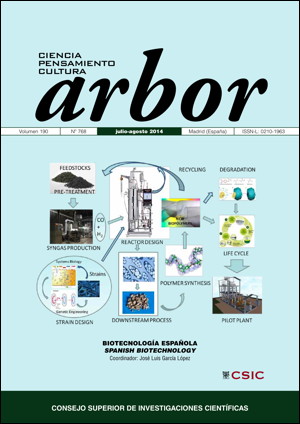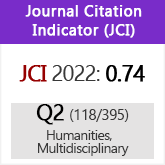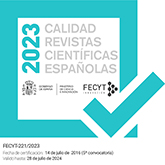Acerca de la biotecnología ambiental
DOI:
https://doi.org/10.3989/arbor.2014.768n4011Palabras clave:
Biorremediación, ciclos biogeoquímicos, biocombustibles, célula de combustible microbiana, pilas bioelectroquímicasResumen
La Biotecnología ambiental trata de corregir los desequilibrios causados en el medio ambiente por actividades industriales que alteran los ecosistemas naturales mediante contaminación química o biológica y que también afectan a los grandes ciclos biogeoquímicos en la biosfera, mayoritariamente catalizados por seres vivos, entre los que los microrganismos juegan un papel esencial. Las desviaciones en los balances de compuestos carbonados, nitrogenados y azufrados atmosféricos pueden causar fenómenos de gran complejidad como el calentamiento global, la destrucción de la capa de ozono, la contaminación ambiental o la lluvia ácida. Por otra parte, las interacciones de los microorganismos entre sí y con el medio, desconocidas en su mayor parte, tiene importantes repercusiones en la generación y persistencia de especies químicas que, depositadas en las cadenas tróficas, son altamente tóxicas para los organismos vivos. Para atajar estos problemas es necesario avanzar en el conocimiento a nivel molecular de la ecología microbiana y del funcionamiento de los ciclos biogeoquímicos, aunque no es menos necesario desarrollar tecnologías para la eliminación de contaminantes industriales in situ y ex situ, evitar su producción y utilización incontroladas así como corregir las actuaciones desequilibrantes, actuales o futuras, de la biogeoquímica planetaria.
Descargas
Citas
Beal, E. J., House, C. H. y Orphan, V. J. (2009). "Manganese- and iron-dependent marine methane oxidation". Science, 325, pp. 184-187. http://dx.doi.org/10.1126/science.1169984 PMid:19589998
Blasco, R., Wittich, R. M., Mallavarapu, M., Timmis, K. N. y Pieper, D. H. (1995). "From xenobiotic to antibiotic, formation of protoanemonin from 4-chlorocatechol by enzymes of the 3-oxoadipate pathway". The Journal of Biological Chemistry, 270, pp. 29229-29235. http://dx.doi.org/10.1074/jbc.270.49.29229 PMid:7493952
Castillo, F., Roldán, M., Blasco, R., Huertas, M. J., Caballero, F. J., Moreno-Vivián, C. y Martínez Luque, M. (2005). Biotecnología Ambiental. Madrid: Tébar.
Cusick, R. D., Kim, Y. y Logan, B. E. (2012). "Energy capture from thermolytic solutions in microbial reverse-electrodialysis cells". Science, 335, pp. 1474-1477. http://dx.doi.org/10.1126/science.1219330 PMid:22383807
DaSilva, E. J. (2004). "The Colours of Biotechnology: Science, Development and Humankind". Electronic Journal of Biotechnology, 7, pp. 01-02.
Fleming, E. J., Mack, E. E., Green, P. G. y Nelson, D. C. (2006). "Mercury methylation from unexpected sources: molybdate-inhibited freshwater sediments and an iron-reducing bacterium". Applied and Environmental Microbiology, 72, pp. 457-464. http://dx.doi.org/10.1128/AEM.72.1.457-464.2006 PMid:16391078 PMCid:PMC1352261
Foley, J. A. (2011). "Can we feed the world & sustain the planet?". Scientific American, 305, pp. 60-65. http://dx.doi.org/10.1038/scientificamerican1111-60 PMid:22125864
García, J. L., Santos, V., García-Ochoa, F., García-Calvo, E., Díaz, E., Zamarro, T., Alcón, A., Boltes, K., Letón, P. y Gámez, E. (2007). "Genetic and chemical engineering studies on DBT biodesulphurization". Journal of Biotechnology, 131, pp. S86-S87. http://dx.doi.org/10.1016/j.jbiotec.2007.07.149
Gilmour, C. C., Elias, D. A., Kucken, A. M., Brown, S. D., Palumbo, A. V., Schadt, C. W. y Wall, J. D. (2011). "Sulfate-reducing bacterium Desulfovibrio desulfuricans ND132 as a model for understanding bacterial mercury methylation". Applied and Environmental Microbiology, 77, pp. 3938-3951. http://dx.doi.org/10.1128/AEM.02993-10 PMid:21515733 PMCid:PMC3131654
Hamelin, S., Amyot, M., Barkay, T., Wang, Y. y Planas, D. (2011). "Methanogens: principal methylators of mercury in lake periphyton". Environmental Science & Technology, 45, pp. 7693-7700. http://dx.doi.org/10.1021/es2010072 PMid:21875053
Handelsman, J. (2004). "Metagenomics: application of genomics to uncultured microorganisms". Microbiology and Molecular Biology Reviews, 68, pp. 669-685. http://dx.doi.org/10.1128/MMBR.68.4.669-685.2004 PMid:15590779 PMCid:PMC539003
Kim, Y., Hatzell, M. C., Hutchinson, A. J. y Logan, B. E. (2011). "Capturing power at higher voltages from arrays of microbial fuel cells without voltage reversal". Energy & Environmental Science, 4, pp. 4662-4667. http://dx.doi.org/10.1039/c1ee02451e
Knittel, K. y Boetius, A. (2009). "Anaerobic oxidation of methane: progress with an unknown process". Microbiology. Annual Review of Microbiology, 63, pp. 311-334. http://dx.doi.org/10.1146/annurev.micro.61.080706.093130 PMid:19575572
Lijó, L., González-García, S., Bacenetti, J., Fiala, M., Feijoo, G., Lema, J. M. y Moreira, M. T. (2014). "Life Cycle Assessment of electricity production in Italy from anaerobic co-digestion of pig slurry and energy crops". Renewable Energy, 68, pp. 625-635. http://dx.doi.org/10.1016/j.renene.2014.03.005
Logan, B. E. (2009). "Exoelectrogenic bacteria that power microbial fuel cells". Nature Reviews Microbiology, 7, pp. 375-381. http://dx.doi.org/10.1038/nrmicro2113 PMid:19330018
Logan, B. E., Hamelers, B., Rozendal, R., Schroder, U., Keller, J., Freguia, S., Aelterman, P., Verstraete, W. y Rabaey, K. (2006). "Microbial fuel cells: methodology and technology". Environmental Science & Technology, 40, pp. 5181-5192. http://dx.doi.org/10.1021/es0605016
Luque-Almagro, V. M., Acera, F., Ige-o, M. I., Wibberg, D., Roldán, M. D., Sáez, L. P., Hennig, M., Quesada, A., Huertas, M. J., Blom, J., Merchán, F., Escribano, M. P., Jaenicke, S., Estepa, J., Guijo, M. I., Martínez-Luque, M., Macías, D., Szczepanowski, R., Becerra, G., Ramírez, S., Carmona, M. I., Gutiérrez, O., Manso, I., Pu.hler, A., Castillo, F., Moreno-Vivián, C., Schlu.ter, A. y Blasco, R. (2013). "Draft whole genome sequence of the cyanide- degrading bacterium Pseudomonas pseudoalcaligenes CECT5344". Environmental Microbiology, 15, pp. 253-270. http://dx.doi.org/10.1111/j.1462-2920.2012.02875.x PMid:22998548
Luque, A. y Gordillo-Vázquez, F. J. (2012). "Mesospheric electric breakdown and delayed sprite ignition caused by electron detachment". Nature Geoscience, 5, pp. 1-4.
Munthali, M. T., Timmis, K. N. y Díaz, E. (1996). "Use of colicin e3 for biological containment of microorganisms". Applied and Environmental Microbiology, 62, pp. 1805-1807. PMid:16535323 PMCid:PMC1388861
Nielsen, L. P., Risgaard-Petersen, N., Fossing, H., Christensen, P. B. y Sayama, M. (2010). "Electric currents couple spatially separated biogeochemical processes in marine sediment". Nature, 463, pp. 1071-1074. http://dx.doi.org/10.1038/nature08790 PMid:20182510
Pancost, R. D., Steart, D. S., Handley, L., Collinson, M. E., Hooker, J. J., Scott, A. C., Grassineau, N. V. y Glasspool, I. J. (2007). "Increased terrestrial methane cycling at the Palaeocene-Eocene thermal maximum". Nature, 449, pp. 332-335. http://dx.doi.org/10.1038/nature06012 PMid:17882218
Parks, J. M., Johs, A., Podar, M., Bridou, R., Hurt, R. A. Jr., Smith, S. D., Tomanicek, S. J., Qian, Y., Brown, S. D., Brandt, C. C., Palumbo, A. V., Smith, J. C., Wall, J. D., Elias, D. A. y Liang, L. (2013). "The genetic basis for bacterial mercury methylation". Science, 339, pp. 1332-1335. http://dx.doi.org/10.1126/science.1230667 PMid:23393089
Pfeffer, C., Larsen, S., Song, J., Dong, M., Besenbacher, F., Meyer, R. L., Kjeldsen, K. U., Schreiber, L., Gorby, Y. A., El-Naggar, M. Y., Leung, K. M., Schramm, A., Risgaard-Petersen, N. y Nielsen, L. P. (2012). "Filamentous bacteria transport electrons over centimetre distances". Nature, 491, pp. 218-221. http://dx.doi.org/10.1038/nature11586 PMid:23103872
Pienkos, P., Laurens L. y Aden, A. (2012). "Biocombustibles de microalgas". Investigación y Ciencia, 427, pp. 50-58.
Pla, S. y Catalan, J. (2005). "Chrysophyte cysts from lake sediments reveal the submillennial winter/spring climate variability in the northwestern Mediterranean region throughout the Holocene". Climate Dynamics, 24, pp. 263-278. http://dx.doi.org/10.1007/s00382-004-0482-1
Ramos, J. L., Guerrero, M. G. y Losada, M. (1984). "Sustained Photoproduction of Ammonia from Dinitrogen and Water by the Nitrogen-Fixing Cyanobacterium Anabaena sp. Strain ATCC 33047". Applied and Environmental Microbiology, 48, pp. 114-118. PMid:16346577 PMCid:PMC240331
Semrau, J. D. (2011). "Bioremediation via Methanotrophy: Overview of Recent Findings and Suggestions for Future Research". Frontiers in Microbiology, 2, pp. 1-7. http://dx.doi.org/10.3389/fmicb.2011.00209 PMid:22016748 PMCid:PMC3191459
Simon, C. y Daniel, R. (2011). "Metagenomic Analyses: Past and Future Trends". Applied and Environmental Microbiology, 77, pp. 1153-1161. http://dx.doi.org/10.1128/AEM.02345-10 PMid:21169428 PMCid:PMC3067235
Sutton, M. A. y Bleeker, A. (2013). "Environmental science: The shape of nitrogen to come". Nature, 494, pp. 435-437. http://dx.doi.org/10.1038/nature11954 PMid:23426258
Timmis, K., de Lorenzo, V., Verstraete, W., García, J. L., Ramos, J. L., Santos, H., Economidis, I., Nogales, B., Timmis, J. K., Fonseca, C., Pruzzo, C., Karagouni, A., Panopoulos, N. y Dixon, B. (2014). "Pipelines for New Chemicals: a strategy to create new value chains and stimulate innovation-based economic revival in Southern European countries". Environmental Microbiology, 16, pp. 9-18. http://dx.doi.org/10.1111/1462-2920.12337 PMid:24387039
Webber, M. E. (2012). "More food, less energy". Scientific American, 306, pp. 74-79. http://dx.doi.org/10.1038/scientificamerican0112-74 PMid:22279839
Weber, C., Farwick, A., Benisch, F., Brat, D., Dietz, H., Subtil, T. y Boles, E. (2010). "Trends and challenges in the microbial production of lignocellulosic bioalcohol fuels". Applied Microbiology and Biotechnology, 87, pp. 1303-1315. http://dx.doi.org/10.1007/s00253-010-2707-z PMid:20535464
Publicado
Cómo citar
Número
Sección
Licencia
Derechos de autor 2014 Consejo Superior de Investigaciones Científicas (CSIC)

Esta obra está bajo una licencia internacional Creative Commons Atribución 4.0.
© CSIC. Los originales publicados en las ediciones impresa y electrónica de esta Revista son propiedad del Consejo Superior de Investigaciones Científicas, siendo necesario citar la procedencia en cualquier reproducción parcial o total.Salvo indicación contraria, todos los contenidos de la edición electrónica se distribuyen bajo una licencia de uso y distribución “Creative Commons Reconocimiento 4.0 Internacional ” (CC BY 4.0). Puede consultar desde aquí la versión informativa y el texto legal de la licencia. Esta circunstancia ha de hacerse constar expresamente de esta forma cuando sea necesario.
No se autoriza el depósito en repositorios, páginas web personales o similares de cualquier otra versión distinta a la publicada por el editor.















